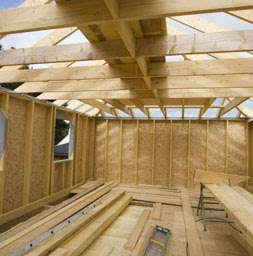If you’re building a new home or renovating an older one, you may have the line from “Field of Dreams” running through your mind: “If you build it, he will come.”
Sure, they came to Kevin Costner’s magical baseball field, but it’s not so simple in the real world of building construction. Before you build it, you have to insure it.
Why do you need insurance? The general contractor (GC), who manages all the skilled workers on the project, regardless of who hired them, is held responsible for any injury or damage on the building site.
Here are four ways to protect your new construction or renovations from liability:
1. General liability insurance. All contractors and builders should start out with this basic coverage. It will protect them in case of injury or property damage to clients, employees, and even bystanders. General liability coverage can also protect the contractor’s equipment, and against other liabilities on the contractor’s premises.
State insurance laws can get more complicated when it comes to construction insurance.
Let’s look at New York as an example. Labor Law 240(1) imposes strict liability on GCs and building owners when workers are injured on the job, even if they are subcontractors. It doesn’t matter who is at fault for the injury—the GC can still be sued and held responsible for the worker’s injury. This makes the prospect of underwriting certain skilled workers very expensive. (Underwriting is determining the cost of the risk inherent in a specific type of business.)
We have a client, insured as a sole proprietor carpenter, who helped supervise renovations to a friend’s house. One of the workers the homeowner hired fell off a ladder and was injured. He sued our client, as the GC of the job, and the case went to court. While the carrier defended our client, the carrier denied the damages awarded to the plaintiff because the policy was written for a contractor and not a GC. Our client had to pay $18,000 to the injured worker.
To make things even more complicated, the statute exempts single-family homeowners from this strict liability, but it doesn’t exempt normal tort liability. In other words, a homeowner can still be held liable for injury, just not under the 240(1) law.
2. Additional insured blanket coverage. Depending on the type of project for which a contractor is hired, the contract most likely will require the client to be added as an additional insured to the contractor’s policy. An additional insured is a person or entity that enjoys the benefits of being insured under an insurance policy in addition to the named insured. Depending on how many projects are involved and how many insureds are added, it can be more economical to purchase the blanket coverage, rather than buying à la carte.
3. Care, custody & control endorsement. This is another one of those complicated insurance terms, but it matters quite a bit to your policy. It helps determine liability coverage based on who is held responsible for the “care, custody, or control” of the construction. This is usually not included in the standard policy language, but it can be a valuable addition to construction insurance.
4. Tools off premises.Contractors need tools to build. Typically, the tools must move with the contractor, so make sure the tools are covered for off-premises theft and damage.
Linda Rey is a licensed insurance agent at Rey Insurance with a broad spectrum of expertise in life, accident, health, property and casualty insurance as well as retirement planning and college funding strategies.
READ MORE:
Insuring a Home Office
Insuring a Vacant Home
Insurance Agents vs. Insurance Websites: Where Will You Get the Better Buy?
Umbrella Insurance: The FAQs







